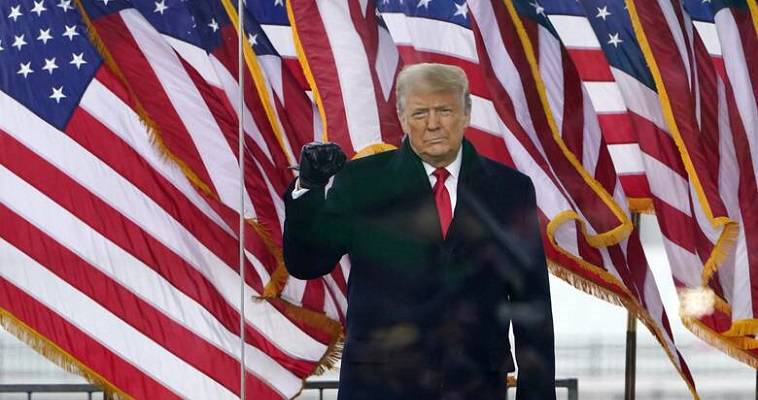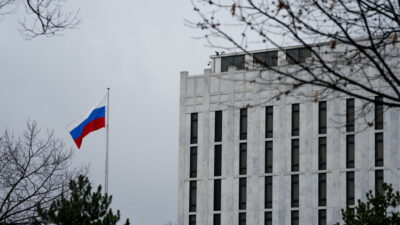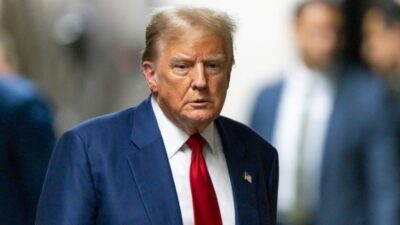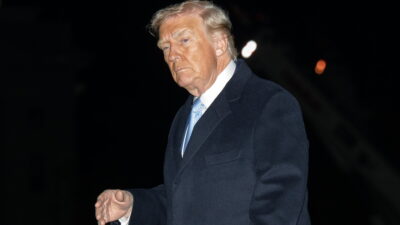Stavros Lygeros: The American Cold Civil War – Trump is leaving, Trumpism remains
08/01/2021
Trump’s departure from the White House has all the hallmarks of his stubborn and adventurous personality. Calling on his supporters to demonstrate outside the Capitol with the slogan to prevent the formal institutional ratification of Biden’s election, it was clear from the start that he was playing with matches next to dynamite. Trumpism as a political grassroots movement is now a fact.
After all, even when the incidents broke out, the outgoing president not only did not condemn them, but he seemed almost excited to torpedo the ratification process. Only later did he assure that the transfer of power would take place smoothly, apparently fearing that he might even be accused of attempting a coup.
What has been happening in the US from the eve of last November’s election until the landmark January 6, 2021, however, is only the visible tip of the iceberg. The United States has not reached this point either overnight or for no apparent reason. Something is happening in American society (and not only within it) and this has not just been happening after the Trump election in 2016.
To be precise, it was the socio-economic differences that have taken place over the last 20 years that shaped the political landscape in a way that made the Trump election possible. Twenty years ago, it would have been unthinkable for Bernie Sanders, a socialist from small and insignificant Vermont, to claim from Hillary Clinton the Democratic nomination on equal terms in 2016. And of course, it would be inconceivable for a character like Trump to be nominated by Republicans and even more so to be elected president.
Not an American whim
This is not an American whim. Brexit may have stuck to traditional British Euroscepticism, but it came from the same matrix of anti-systemic voting that is changing the political map across the West. There are many examples. What matters is that the traditional political hegemony of the bipolarity of the liberal center-right and center-left is strongly challenged by the citizens.
The lower and middle classes, who are turning their backs on the traditionally dominant political factions, have certainly not been infected by an ideological virus that pushes them to extremes. The main reason they challenge the established order of things is that it more or less overturns the constants of their lives in all the lengths and breadths of the Western World.
These are tectonic changes that continue to be caused in western societies by the crisis of 2008 and that the pandemic has worsened in the last year. The financial crisis, however, did not fall from the sky. It is an authentic product of the greed of the moneyed oligarchy. The unequal distribution of wealth has taken on frightening proportions. According to the New York Times, in the 1990s 1% of Americans accounted for 45% of GDP growth. In the eight years of Bush (2000-08) 45% became 65% and in the eight years of Obama it jumped to 93%!
They sawed the branch they are sitting on
The center-right and the center-left have consolidated their long-standing political hegemony in the implicit social contract, on the basis of which they ensured prosperity and the Welfare State, or a combination of the two, for the lower and middle classes. From one point onwards, however, they converged and functioned as a vehicle of globalization and implementers of the (neo) liberal agenda.
In this way, however, they sawed the branch they were sitting on. For a time prosperity was maintained through public borrowing, but then austerity inevitably came. Organized by the political elites, the moneyed oligarchy cynically deconstructs the shock absorbers that not only maintained social peace after the war, but also fueled economic growth.
Although Obama’s social policy alleviated the crisis in the United States, much of the population found it difficult to survive there with dignity. It is not just minorities and the traditionally marginalized. Globalization is throwing off the “train” small and medium-sized households and especially the traditional white working class of “deep America” that has been hit hard by deindustrialization.
Trump and the “swamp”
The election of Trump, then, was the product of this very social dynamic. A look at the US election map of 2016 shows that Hillary Clinton was generally voted for by the upper class and the middle classes that have been integrated into the context of economic liberalization and globalization. Also, by the minorities (blacks, Hispanics, Muslims, etc.) who were afraid of the anti-immigrant rhetoric of the then-candidate Trump.
When Trump promised to impose tariffs on large companies and jobs, he touched the sensitive strings of millions of Americans directly or indirectly affected by deindustrialization. His rhetoric for taking drastic measures against the migratory current worked in the same direction. The influx of immigrants sharpens the self-preservation instinct of societies that feel threatened by impoverishment. For these sections of the population, competition from cheap migrant labor is seen as an additional threat.
Conservative white “deep America” has a sense of nostalgia for the good old days and a mixture of despair and anger for today. This is exactly what Trump said, promising to clear the “swamp” of Washington. It is one of the ironies of history that this role was played by a billionaire, creating an entire movement, such as Trumpism.
Trump’s promises have gained credibility in the eyes of his followers more from the way the establishment treated him than from the rhetoric itself. Almost the entire financial system, the big media, and the branches of the American and international establishment had passionately supported Hillary Clinton and at the same time tried in every way to ridicule the Republican candidate and then president. Even the leadership of his own party had not only tried to sabotage him in the race for the nomination but also when he won it several party members had sided with Clinton!
The populist and toxic Trump
Obviously, Trump is both populist and highly toxic. He proved it before and after he settled in the White House. The main reason, however, that became a “red cloth” for the liberal establishment was that he touched on – at least in words – its holy grail, that is, globalization. On the other hand, such is the contempt shown by the ruling elites for the “hoi polloi” and there has been such abuse in brainwashing, which has had the opposite effect. When the established media passionately attacks an issue, a large part of American society reflexively takes the opposite position, in this case identifying with Trump.
The outgoing president changed the traditional Democrat-Republican line. He highlighted a separation that emerges from the bowels of American society and stems from socio-economic reality. Trump’s rhetoric targeted Americans whom globalization is throwing off the “train” and whom Clinton had bluntly called “sad people.” In fact, he has completed and consolidated a conflictingly idiosyncratic and often irrational ideological trend that had already begun to develop within the rank-and-file voters of the Republican Party.
Trump may have been president for only four years, but he leaves a much deeper mark on American history. He himself was defeated and will de facto go to the sidelines, but “Trumpism” is now a tangible political reality, which will de facto affect the political balance in the United States.
It should be noted that in a poll conducted immediately after the unprecedented episodes, only 62% condemned them despite the universal and absolute condemnation by the media system. This proves that American society is deeper than ever divided and with a conflicting tendency. The existing ideological-political rift is not going to be bridged, because it is precisely fueled by the economic-social rift.





